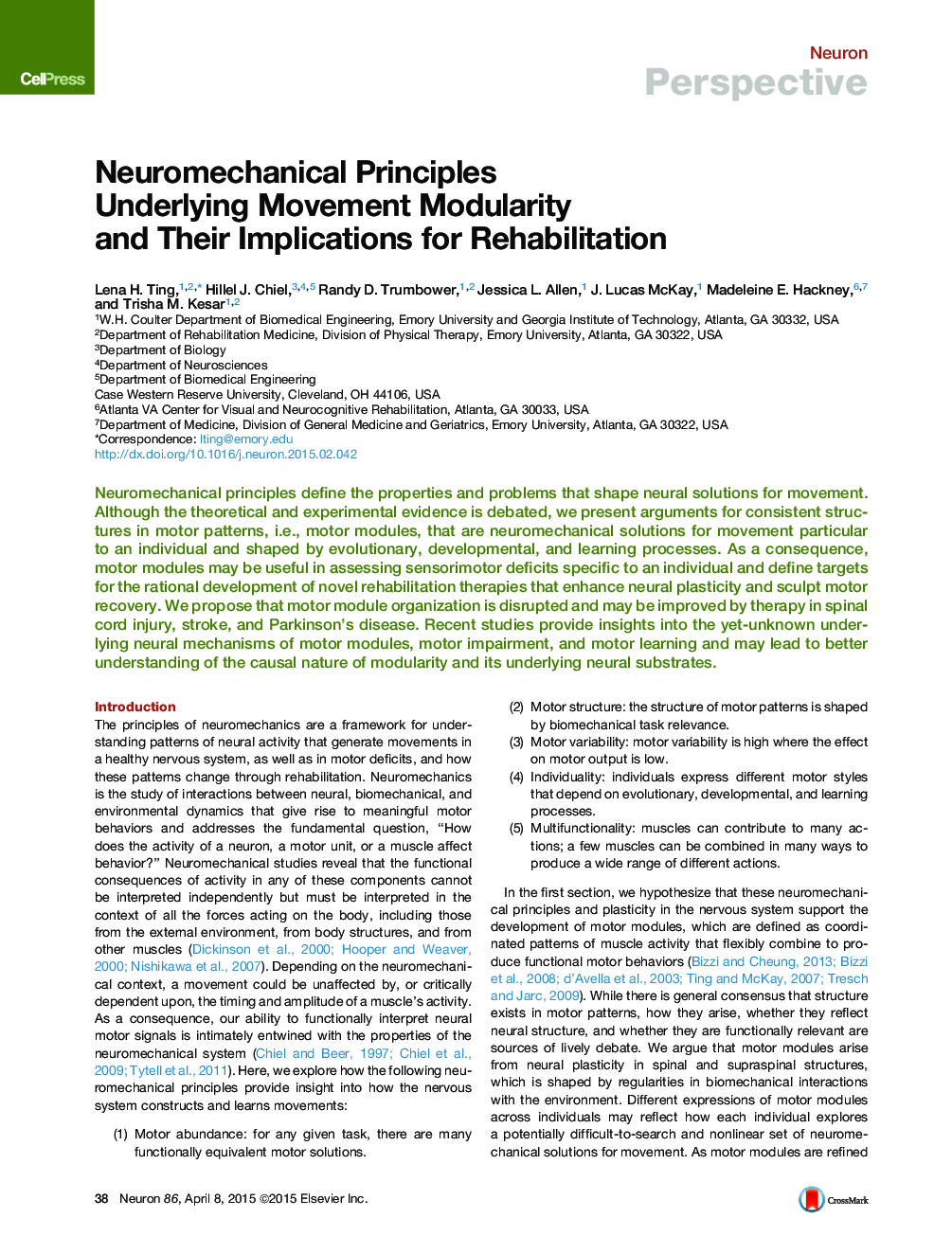| Article ID | Journal | Published Year | Pages | File Type |
|---|---|---|---|---|
| 4320997 | Neuron | 2015 | 17 Pages |
Neuromechanical principles define the properties and problems that shape neural solutions for movement. Although the theoretical and experimental evidence is debated, we present arguments for consistent structures in motor patterns, i.e., motor modules, that are neuromechanical solutions for movement particular to an individual and shaped by evolutionary, developmental, and learning processes. As a consequence, motor modules may be useful in assessing sensorimotor deficits specific to an individual and define targets for the rational development of novel rehabilitation therapies that enhance neural plasticity and sculpt motor recovery. We propose that motor module organization is disrupted and may be improved by therapy in spinal cord injury, stroke, and Parkinson’s disease. Recent studies provide insights into the yet-unknown underlying neural mechanisms of motor modules, motor impairment, and motor learning and may lead to better understanding of the causal nature of modularity and its underlying neural substrates.
